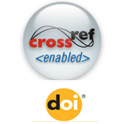



Book Review - (2024) Volume 17, Issue 113
Received: Jun 01, 2024, Manuscript No. jisr-24-141410; Editor assigned: Jun 04, 2024, Pre QC No. jisr-24-141410; Reviewed: Jun 17, 2024, QC No. jisr-24-141410; Revised: Jun 21, 2024, Manuscript No. jisr-24-141410; Published: Jun 28, 2024, DOI: 10.17719/jisr.2024. 141410
The integration of new health information technologies (HIT) in healthcare systems is pivotal for improving patient care and operational efficiency. However, the adoption and utilization of these technologies among nurses are influenced by various factors, including peer opinions. This study investigates the impact of peer opinions on nurses' usage of new HIT through a social network analysis (SNA) approach. By examining the social interactions and influence patterns within a nursing staff network, the research aims to identify key influencers and the extent to which their opinions shape technology adoption behaviors. Findings suggest that positive peer opinions significantly enhance the adoption rates of HIT among nurses, while negative opinions or resistance from influential peers can hinder this process. The study provides valuable insights for healthcare administrators and policymakers to strategize effective implementation and support mechanisms for HIT.
Health Information Technologies (HIT); Nurses; Peer opinions; Social network analysis (SNA); Technology adoption
The adoption of new health information technologies (HIT) in healthcare settings promises substantial improvements in patient care, workflow efficiency, and overall healthcare outcomes. However, the successful implementation of these technologies is contingent upon the willingness and ability of healthcare professionals, particularly nurses, to integrate them into their daily practices. Social influences, especially peer opinions, play a crucial role in shaping the attitudes and behaviors of nurses towards new technologies. This study employs social network analysis (SNA) to explore how opinions within a nursing staff network impact the adoption peer and usage of new HIT. SNA provides a robust framework for mapping and analyzing the relationships and interactions among individuals, allowing for a comprehensive understanding of influence dynamics.
Literature review
Health information technologies in nursing
HIT encompasses a wide range of digital tools and systems designed to enhance healthcare delivery, including electronic health records (EHR), clinical decision support systems (CDSS), and telemedicine platforms. The adoption of HIT among nurses has been associated with improved documentation accuracy, enhanced communication, and better patient outcomes.
Social network analysis in healthcare
SNA has been increasingly utilized in healthcare research to investigate the structural and functional aspects of social networks among healthcare professionals. It provides insights into how information flows, how influence is exerted, and how social ties impact professional behaviors.
Peer influence in technology adoption
Peer influence is a critical factor in the diffusion of innovations, particularly in professional settings. Nurses often rely on their peers for advice, support, and validation when adopting new practices. Positive peer opinions can facilitate the acceptance of new technologies, while negative opinions can lead to resistance and non-compliance.
Study design
This study adopts a mixed-methods approach, combining quantitative SNA with qualitative interviews. The study was conducted in a mid-sized hospital with a nursing staff of 120. Data collection involved surveys, network mapping, and semi-structured interviews.
Data collection
Surveys
A structured survey was administered to collect data on nurses' demographics, their usage of new HIT, and their perceptions of peer opinions regarding these technologies.
Network mapping
SNA tools were used to map the social network of the nursing staff. Nurses were asked to identify their key professional contacts within the hospital and rate the influence of these contacts on their professional practices.
Interviews
Semi-structured interviews were conducted with a subset of nurses identified as key influencers and adopters. The interviews explored their experiences, attitudes towards HIT, and the role of peer opinions in their technology usage.
Data analysis
Quantitative data from surveys and network mapping were analyzed using SNA software to identify network structure, centrality measures, and influence patterns. Qualitative data from interviews were thematically analyzed to provide context and depth to the quantitative findings.
Results
Network structure and key influencers
The SNA revealed a highly interconnected network with several central nodes representing key influencers. These influencers were characterized by high degree centrality and betweenness centrality, indicating their pivotal role in information dissemination and influence within the network.
Impact of peer opinions on hit usage
Quantitative analysis showed a significant correlation between positive peer opinions and the frequency of HIT usage among nurses. Nurses who received positive feedback and encouragement from influential peers were more likely to adopt and consistently use new technologies.
Qualitative insights from interviews highlighted that nurses often looked up to their peers for guidance and reassurance when adopting new HIT. Positive experiences shared by peers reduced anxiety and uncertainty, facilitating smoother integration of the technologies into daily routines.
Barriers to adoption
Negative peer opinions and resistance from key influencers were identified as major barriers to HIT adoption. Nurses reported hesitancy and reluctance to use new technologies when influential peers expressed skepticism or dissatisfaction with the systems.
The findings underscore the critical role of peer opinions in shaping nurses' adoption of new HIT. Positive peer influence can act as a catalyst for successful technology integration, while negative influence can significantly impede this process. Healthcare administrators should leverage these insights to design targeted interventions that engage key influencers and promote positive peer interactions.
Implications for practice
This study demonstrates that peer opinions within a nursing staff network significantly impact the adoption and usage of new health information technologies. By employing social network analysis, the research highlights the importance of positive peer influence and the need to address negative opinions to ensure successful technology integration. The insights gained can inform strategies for effective HIT implementation, ultimately improving healthcare delivery and outcomes.
Indexed at, Google Scholar, Crossref
Indexed at, Google Scholar, Crossref
Indexed at, Google Scholar, Crossref
Indexed at, Google Scholar, Crossref
Indexed at, Google Scholar, Crossref
Indexed at, Google Scholar, Crossref
Indexed at, Google Scholar, Crossref
Indexed at, Google Scholar, Crossref
Indexed at, Google Scholar, Crossref

The Journal of International Social Research received 8982 citations as per Google Scholar report